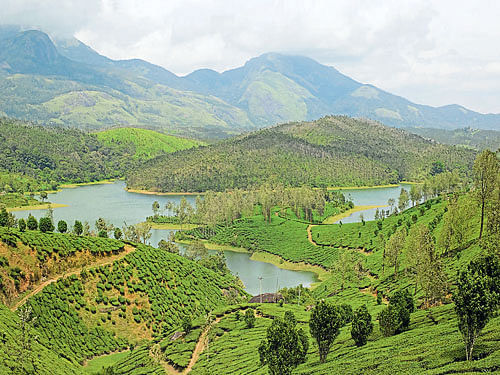As my vehicle plodded up the Ghat Road from Ponneri to Yelagiri, negotiating sharp, meandering U-turns and 14 hairpin bends, new vistas of the jungles and valleys stretched out before me.
I passed through the semi evergreen forests interspersed with towering eucalyptus trees. Strangely, all the hairpin bends here are named after reputed Tamil poets and personalities. The hill slopes were carpeted with the vibrant flowering lantanas.
As I stopped at the seventh bend to catch a glimpse of the scenic wonders, the morning mist unveiled an array of bucolic delights in the valley — a cluster of hamlets, fields of yellow-green paddy, coconut plantations and vegetable farms. When I reached the BSNL tower, I realised that I was in close proximity to the small township. The best way to enjoy one’s stay at Yelagiri is to potter around, starting with the Punganoor Lake. After a leisurely stroll around the lake, I simply relaxed by the water’s edge watching the ripples in the lake.
Sights and sounds
Sprawling over an area of 72 sq km, at an altitude of 3,500 feet in the Eastern Ghats, Yelagiri is sandwiched between Vaniyambadi and Tirupattur towns in the North Arcot district. The erstwhile property of the Yelagiri zamindar family was taken over by the Government of India in the early 1950s. One can still see the ancestral house of the Yelagiri zamindars in Reddiyur. Yelagiri exudes a more desi charm than the colonial-style hill stations.
Yelagiri has a cluster of 14 hamlets. Strolling around the village, I came across some villagers engrossed in relaxed chatter. They had some interesting stories about the origin of the name Yelagiri. One of the villagers said, “When Lord Venkateshwara visited the earth, he put his feet on this hill and it could not stand his weight. People were terrified and screamed ‘yelo’ and ‘kili’, which subsequently got morphed into Yelagiri.”
Surrounded by miles and miles of ripened paddy and mustard fields heightened by the brilliant hues of their yellow flowers, Yelagiri is a back-to-nature destination par excellence. I strolled around the villages of Athanavur, Nilavoor and Kothayoor and savoured a slice of rustic Tamil Nadu.
The mud-walled, thatched roof dwellings and granaries contrasted dramatically with the vernal surroundings. I saw villagers escorting cattle languorously on green pastures, and heard the bleating of goats afar all in the backdrop of the hills. While ambling around the countryside, en route I came across some Malai-Allees, (presumed to be the descendants of a fleeing warrior clan during the regime of Tipu Sultan) returning home with firewood and their cattle.
Next I headed to Nilavur village, known for its lake and an Amman temple, where villagers congregate for a special puja on Fridays. A brightly coloured idol just by the side of the lake grabbed my attention. These guardian deities, known as Aiyanars, are worshipped as protectors of villagers. While basking under the shade of a sprawling banyan tree, the only sound that interrupted the tranquility was the tinkling of cowbells and the chirping of birds. The hilltop Velavan Temple dedicated to Lord Murugan, flanked by a gigantic statue of Ghatotkacha in front, is not only an interesting place of worship in Yelagiri, but also gives visitors a perfect viewing point.
For the adventurous, there are activities galore — peaks to scale, jungle paths and birding trails to explore. There are two main trekking routes — one from Athanavur to Swamimalai Hills (4,338 ft), the other one is an arduous trek from Athanavur to Jalagamparai Waterfalls. On these lesser-trodden routes, one can savour some pristine wilderness. The Attaru River flows through Yelagiri Hills and hurtles down as Jalagamparai Waterfalls.
The trek to Swamimalai, the highest peak (1,128 ft), from Mangalam hamlet, is arduous. However, it is worth the effort for the stunning views. All along the way, one can listen to birdsongs echoing in the woods. En route, there are huge boulders on which one can rest, when one has exhausted all stamina and energy. On reaching the summit, one can find a small cave temple below a massive rock. A traditional torch is lit atop the rock during Karthika Deepam, and the surrounding hills are aglow with the light. Standing on the rock, I watched the green blanket of flora coming into focus as the clouds parted momentarily.
How to get there:
Air: Nearest airports are at Bengaluru (160 km) and Chennai (220km).
Rail: Nearest railway station is at Jolarpettai - 19 km.
Road: Buses and local taxis are available from Jolarpettai Railway Junction.
